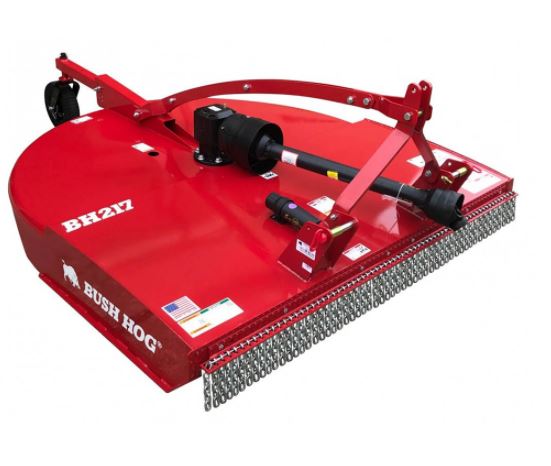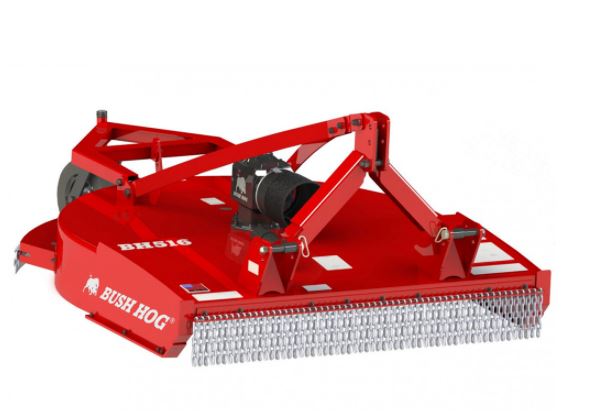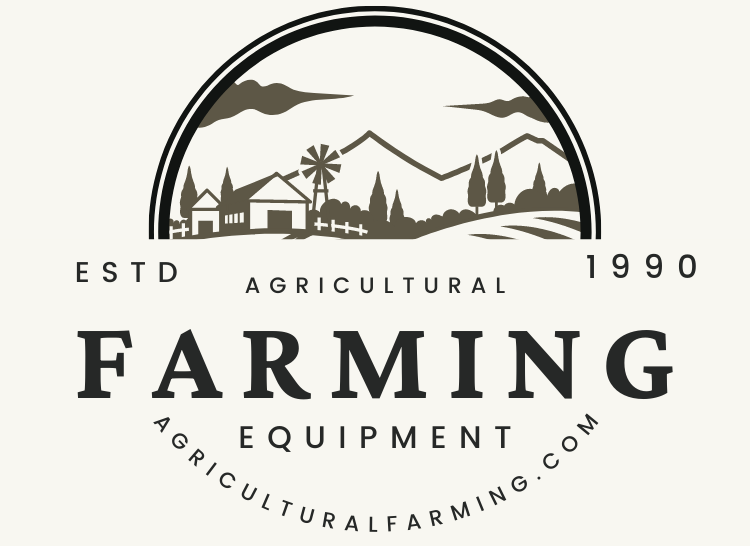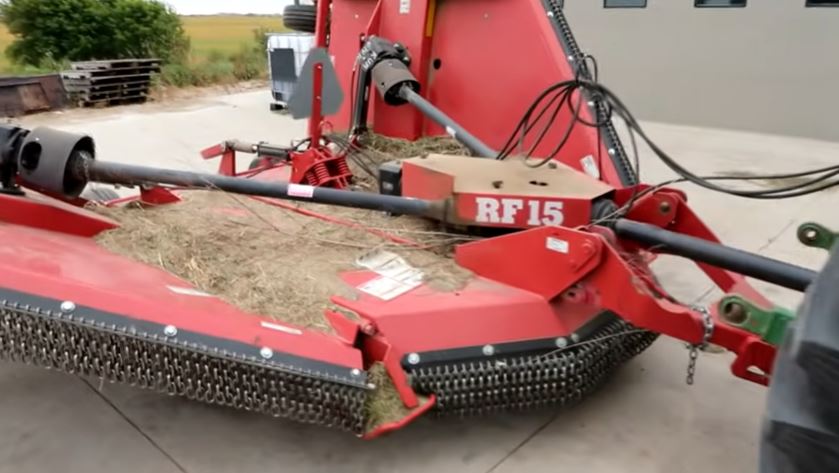When running a farm, there are different pieces of equipment that make everything run as smoothly as possible. Part of that equipment includes a bush hog, which helps you diligently tend to the land. So today, we’ll share what you should know about a bush hog.
Brush hogs help you maintain quality pastures and hayfields, as well as grubbing wooded survival homesteads to create more grazing and gardening space. Bush hogging will be needed to turn unimproved land or a wooded area into a usable space for homesteading or living activity.
As you can see, a bush hog is an integral addition to your machinery set, particularly if your farm exceeds a certain size. Continue reading to discover everything you need to know about a bush hog and much more.
Bush Hog FAQs
What is brush hogging?
A brush hog is a rough mower attached to a tractor (a mowing deck, if you will) used to cut small brush and heavy weeds.
What is a Bush Hog used for?
A bush hog is attached to the tractor and towed behind to clear land (grubbing it) to create a pasture, hayfield, home location spot, garden spot, or tend to established pastures and hayfields. A brush hog cuts in a pattern that is efficient and will help save fuel and time.
Why should you bush hog a pasture?
Even existing livestock pastures should be brush hogged at least once a year to prevent weeds from taking over, vastly decreasing grass growth, and to keep adjacent woods from spreading into the grazing area.
A plethora of medicinal weeds often grow in pastures, so forage away, then set the mowing deck to a medium to a high level, and cut down only the undesirable growth.
What are some of the benefits of brush hogging?
- By hogging the land, you prevent unwanted growth from sucking up all the nutrients you need to develop quality grass.
- If you do not tend to the pasture, fields, or open areas in this matter, they will be reclaimed by the forest in a surprisingly short amount of time.
- Bush hogging also prevents tall and thick growth from overshadowing smaller plants and grass you are attempting to cultivate.
- When trying to create a field on the homestead, regular bush hogging will keep the weeds under control and allow quality grass that has been planted or trying to grow to flourish.
- By bush hogging in the middle to late fall, depending upon your climate, a blanket of cut growth serves as a natural blanket that will increase microbial activity by warming the surface area.
What is the difference between a bush hog and a brush hog?
The most significant difference between the two processes is that with brush hogging, the device turns horizontally to trim back the sides of trees and bushes. That will be done with a brush hog. With bush hogging, the land itself is cleared from brush, small bushes, tall grass, and other overgrown vegetation.
Why is it called a bush hog?
The term “bush hogging” originated with the company that invented the Bush Hog’s first rotary cutter. The brand name is used to describe this type of mowing. Rotary cutters are heavy-duty mowing decks that you tow behind tractors.
How much is a bush hog worth?
The typical lightweight brush hog for a smaller tractor can cost between $2,000 and $4,000. Purchasing used machinery whenever available is always a good idea, but purchase a new brush hog when you need to get one.
How to bush hog?
- Mow along the perimeter of the pasture, field, or area to be cleared in a roughly rectangular shape. Make a few passes with the brush hog to clearly define the boundaries of the cutting area.
- Start at one side of the interior of the boundary area and rough mow straight along one side. Make a defined turn, and then mow another strip down alongside the first. Repeat this step until the interior area has been entirely cut.
- Slightly overlap the parallel rows you create to avoid missed weeds in between the rows.
- Periodically look back at the brush hog mower deck to not cut too deep, too high, or get clogged with debris.
- Occasionally check for dirt and debris build-up on the blades. This happens most often in the field is wet, or the blades are cutting too low into the ground.
Is a bush hog dangerous?
The blades on a rotary cutter can have top speeds of over 150 miles per hour. Therefore the kinetic energy enables the blades to cut through saplings and small trees up to several inches in diameter. Consequently, these mowers can be very dangerous, and contact with the blades would cause severe bodily injury or death.
What should you know before using a bush hog?
- Grease all bearings, especially on the power take-off drive shaft.
- Maintain all safety shields, and DO NOT let anyone near them operate!
- Maintain the proper weight oil in the gearbox.
- Sharpen the blades whenever they get dull with a handheld disk grinder.
- Replace the blades when they get beaten or dull.
- When operating, keep your blades high enough off of the ground so that they don’t dig into the ground.
- Periodically, check your machine so that all bolts and fastenings are tightened snugly.
- In the spring of the year, before the vegetation gets too thick, go out and scout your properties and remove any debris which might harm your machine or you if it gets thrown by the machine when mowing.
What are some of the most common Buh Hog implements?
- Pole Saw: This type of saw has extremely long hands that contain the power portion of the saw at the end where your hand will rest.
- Hatchet or Axe: This durable and portable tool is excellent for chopping down trees that are no larger than 2 inches in diameter.
- Machete: A sharp machete is capable of cutting down small tree saplings and thick brambles.
- Pruning Shears: If the tall and thick weeds cause the brush hog to become clogged or you need to cut away tall thickets that dangle over the tractor seat area, pruning shears will come in quite handy.
- Weed Eater: Making a rough pathway to inspect the area to be bush-hogged will help you unearth tree stumps, rocks, and debris that could harm the farm implement or overturn the tractor.
- Chainsaw: This power tool will cut down tree branches and slice them on a tree stump to make it shorter and scored so Borax can work more efficiently to erode it.
Bush Hog Options
BH100 SERIES SINGLE-SPINDLE ROTARY CUTTERS
All welding is performed on the underside of the deck, giving these cutters a clean, sleek appearance.
All welds are applied at the same temperature, angle, and duration to ensure consistency from start to finish.
Additional enhancements include a stronger gearbox stand & tailwheel caster fork, optional front chain shielding, and optional Cat.

Features:
- 60HP Gearbox Rating
- 2-11 inch Cutting Height
- Durable Laminated Tailwheels
BH200-2 SERIES SINGLE-SPINDLE ROTARY CUTTERS
BH200-2 Series Rotary Cutters combine the legacy and reputation of Bush Hog®’s Single Spindles with new, innovative design updates.
These updated cutters now have full-length strongbacks designed to reinforce the entire length of the cutter, front to back, especially enhancing the rear half of the cutter and tailwheel structure.
Reinforcement plates have been added to the bottom of the rear sidebands, providing extra strength in this critical area when backing into vegetation.

Features:
- Front Deflector
- Rear Metal Band
- Front Chains
BH300-2 SERIES SINGLE-SPINDLE ROTARY CUTTERS
The BH300-2 Series has larger gearboxes, stronger decks, full-length strongbacks, stronger sidebands, and a hitch structure.
Heavy grass, weeds, and medium-sized brush and saplings are no match for these authentic Bush Hog® built cutters.
Available in 5-foot, 6-foot, and 7-foot cutting widths, the BH300 Series Rotary Cutters are designed to deliver superior performance in harsh conditions, day after day, year after year.

Features:
- Quick-Hitch Ready
- Rear Chains
- Puncture-Proof Laminated Tailwheels
BH500 SERIES SINGLE SPINDLE ROTARY CUTTERS
The Extreme-Duty BH516 Series Rotary Cutter is designed and built to take down virtually any unwanted vegetation.
Whether you’re a professional cutting every day or a weekend warrior tackling tough jobs on the farm, these cutters will be with you every step of the way.
Thick pastures, gas and power lines right of ways, roadsides, even small forests are no match for these authentic Bush Hog® built cutters.

Features:
- Quick-Hitch Ready
- Strong 225HP gearbox
- PTO Shield
Do you own a livestock trailer? Read more about them and also find out about rice planter machine options.



